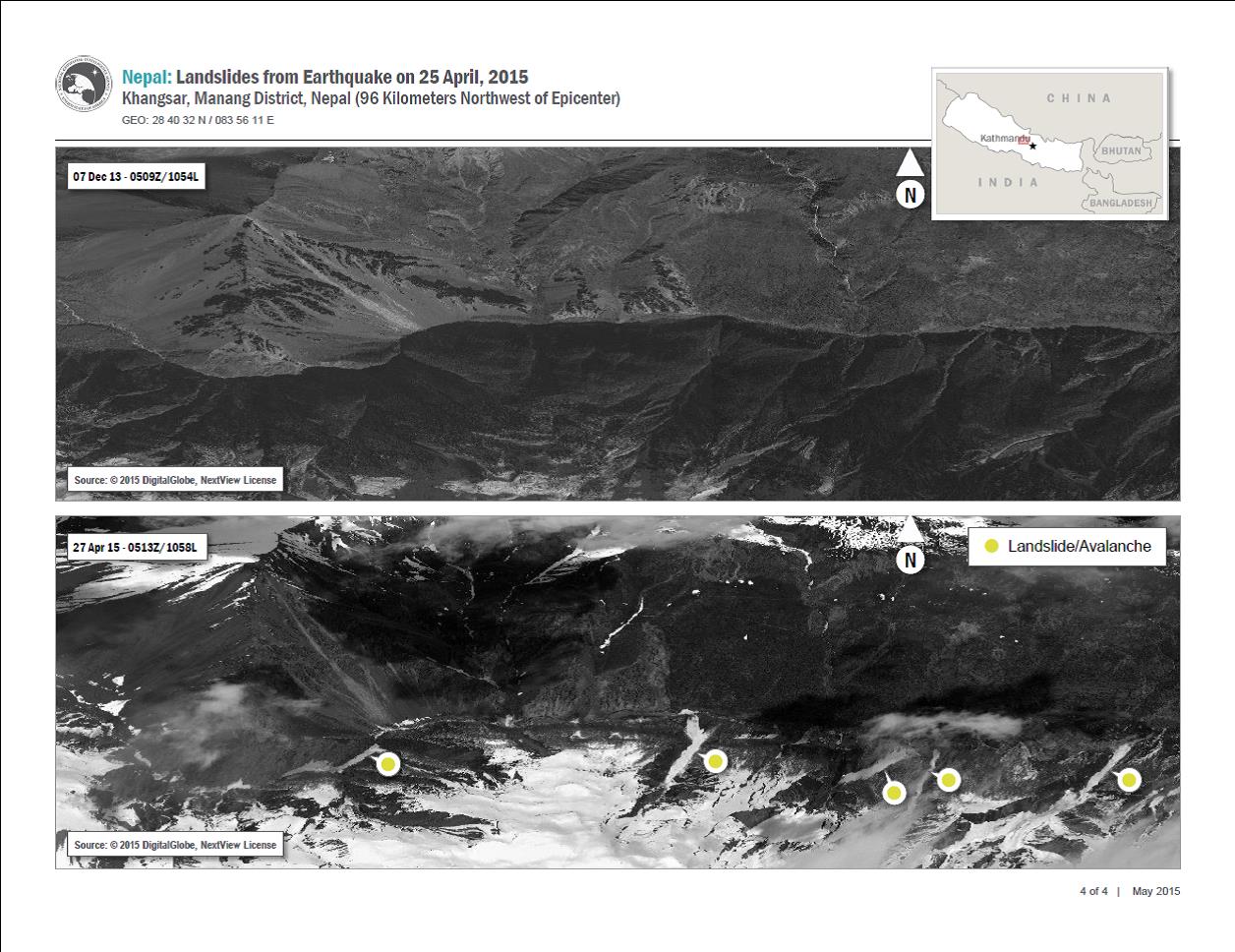Shortly before noon on April 25, 2015, a massive earthquake registering 7.8 on the Richter scale struck central Nepal. Just 3 hours later—around 4 a.m. Central Daylight Time— the USGS Earth Resources Observation and Science (EROS) Center Disaster Response Coordinators were contacted by the emergency on-call officer from the International Charter for Space and Major Disasters.
The USGS has been providing support to the International Charter since becoming a member in 2005. The Charter is a mechanism for rapidly acquiring satellite imagery of locations impacted by natural or human-made disasters and delivering those data, and products derived from them, into the hands of emergency responders and relief agencies as quickly as possible, and at no charge.
When an earthquake, flood, oil spill, or other disaster occurs, a specially trained, authorized user submits a request for satellite imagery and whatever other data or products are needed. Authorized users can initiate the Charter response for a disaster occurring in their own country, or on behalf of someone from another country. The request sets in motion the tasking of satellites (usually within just 2 to 3 hours) to capture images and the subsequent delivery of data to whomever needs it. For further information, contact Brenda Jones, USGS EROS, bkjones@usgs.gov
http://www.disasterscharter.org

Landslide indicator map showing the locations of landslides as a result of the April 25, 2015, earthquake in Nepal. The imagery was provided through USGS to the users of the International Charter Space and Major Disasters.

